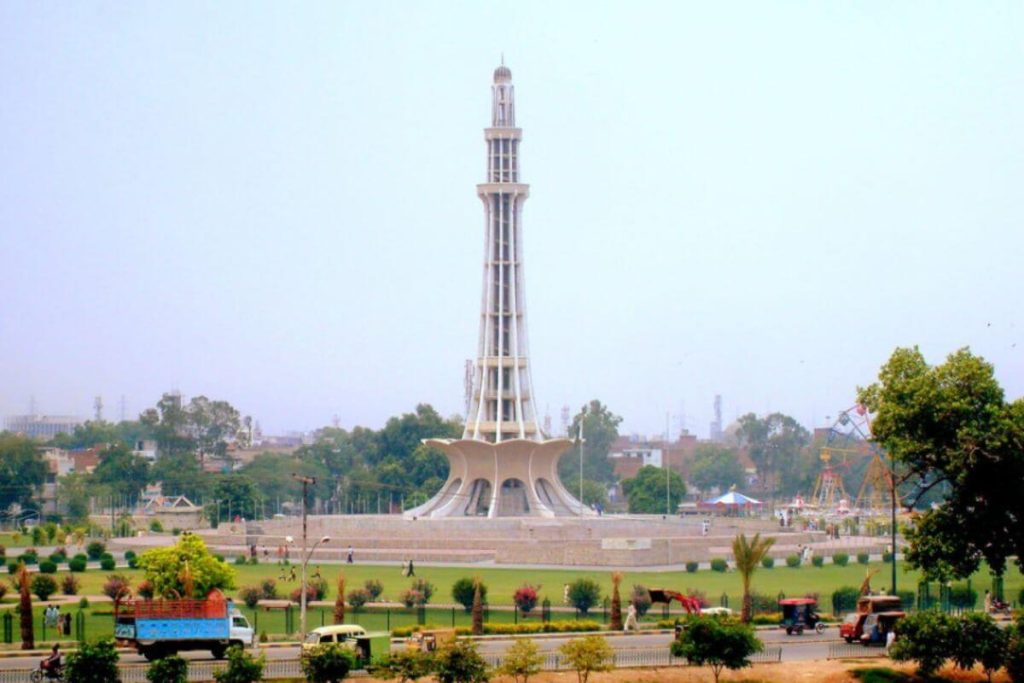Minar-e-Pakistan, also known as the Tower of Pakistan, is a national monument located in Iqbal Park, Lahore. The tower stands tall at the height of 70 meters and is a symbol of Pakistan’s struggle for independence. In this article, we will take a closer look at this magnificent monument’s history, architecture, and significance.
History of Minar-e-Pakistan
Building a monument to commemorate the Lahore Resolution, which called for creating a separate Muslim state in South Asia, was first proposed in 1960. The government of Pakistan announced a design competition for the monument, and a team of Pakistani architects led by Nasreddin Murat-Khan won the competition. Construction work on the monument started in 1960 and was completed in 1968.
The monument is where the Lahore Resolution was passed on March 23, 1940. This resolution, also known as the Pakistan Resolution, was a historical event that led to the creation of Pakistan. The monument was designed to mark this historic event and to pay tribute to the people who sacrificed their lives and worked tirelessly to achieve independence.
Architecture of Minar-e-Pakistan
The architecture of Minar-e-Pakistan is a beautiful blend of Islamic and modern styles. The monument is made of reinforced concrete and is adorned with marble and stone cladding. The tower has a base diameter of 8.5 meters and tapers to a diameter of 3.5 meters at the top. The tower is divided into five
parts, each representing a different era in the history of Pakistan. The first part of the tower represents the pre-partition era when the subcontinent was under British rule. The second part describes the period between the Lahore Resolution and the partition of India, which took place in 1947. The third part represented the period after independence when Pakistan
struggled to establish itself as a new nation. The fourth part describes the era of Ayub Khan, who served as Pakistan’s president from 1958 to 1969. The fifth and final part represents the era of Zulfikar Ali Bhutto, who served as Pakistan’s prime minister from 1971 to 1977.
The top of the tower is crowned with a crescent and star, which are important symbols of the Muslim faith. The crescent represents progress, and the star represents light. The tower is surrounded by a large circular platform, adorned with marble tiles and surrounded by a pool of water.
Significance of Minar-e-Pakistan
Minar-e-Pakistan is not only a significant historical and architectural monument, but it also holds immense cultural and symbolic value for the people of Pakistan. The tower is a symbol of the struggle and sacrifice of the people of Pakistan for their independence. The site where the tower stands is also of
historical significance, as it was here that the Lahore Resolution was passed on March 23, 1940, which called for the creation of an independent Muslim state in South Asia.
Visiting Minar-e-Pakistan
Minar-e-Pakistan is one of the most famous and among the best places in Lahore. Visiting Minar-e-Pakistan is a must-do activity for anyone visiting Lahore. The tower is open to visitors from sunrise to sunset every day, and tickets can be purchased at the entrance. Visitors can climb up to the top of the tower and enjoy the breathtaking views of Lahore. A beautiful park, a popular spot for picnics and family outings, also surrounds the tower. If you are coming from abroad to visit Lahore and need to get a rent a car Lahore services to visit Lahore then choose Haririi rent a car Lahore. They have tour guides and they know all the best places for you in Lahore.
In conclusion, Minar-e-Pakistan is a magnificent national monument representing the struggle and sacrifice of the people of Pakistan for their independence. The tower’s rich history, beautiful architecture, and cultural significance make it a marvel of human ingenuity and creativity. The tower is a symbol of the resilience and determination of the people of Pakistan and serves as a constant reminder of their struggle for freedom and independence.


